Poconé
Poconé was settled following the discovery of gold in 1771 by Luiz de Albuquerque de Melo Pereira e Cáceres - originating as a village called Beripoconé, after the local Indian tribe. For a while it was also called São Pedro d'El Rey in honour of Pedro III then King of Portugal - but the original name stuck and it reverted to the name of Poconé when it was promoted to town status in 1831, then city status in 1863. By that time the gold had run out, with the region's economy then based around cattle ranching.
The majority of the region's economy is still based primarily on cattle ranching and agriculture, but a significant contribution now comes from tourism. Gold mining has also made a comeback - but has been modernised, operating under controls aimed to reduce pollution to the waterways and the environment.
Pantanal Mato-Grossense National Park
Porto Jofre (at the other end of the Transpantaneira) is the gateway to Pantanal Mato-Grossense National Park. The area remains undeveloped and near pristine - meaning its one of the best locations in the region to see and photograph a wide range of wildlife including over 600 species of birds, as well as larger animals such as giant anteaters, giant otters, tapir, howler monkeys and jaguars
The park is located at the confluence of the Paraguai and Cuiaba Rivers, and includes several large lakes such as Baía Uberaba. It was created in 1981, having been formed out of an old ecological station and reserve populated by local Guato indians. The park has expanded with the acquisition of several ranches around the park's edge. There isn't much infrastructure for visitors - being oriented more towards conservation and research rather than tourism. There's no camping or accommodation within the park. However, boat journeys through the park can be organised from nearby Porto Jofre.
Tours can be arranged through the nearby Hotel Porto Jofre Pantanal Norte.
Things to See and Do
Aside from travel along the Transpantaneira, and visits to nearby Pantanal lodges, there isn't a huge amount to see and do in Poconé. However, the town's fame for crafts such as pottery, hammocks, and a type of rustic ukulele called a viola de cocho make a trip to the craft mall in the Cultural Centre (located at 348 Rua Salvador Marques).
In the event you've made it all the way to Poconé and still haven't yet arranged a tour, a good place to start in the local Tour Guides' association (ASSOPTUR) located at 135 Praço Menino Jesus. From here you should be able to arrange excursions for horse riding and boat trips.
Festa de São Benedito (June)
Cavalhada
Cavalhada. Procession going out onto the field of “battle” for Poconé’s annual Christian vs. Moor re-enactment. Photo: Lucas Ninno/GCOM.
Cavalhada participants ride on horseback, competing in a range of events. Photo: Marcos Bergamasco/Secom-MT.
Poconé holds it's São Benedito festival in the first week of June, This includes the annual Cavalhada - a colourful recreation of ancient battles between the Christians and Moors in Spain and Portugal over 500 years ago. The town splits into two sides (Christians and Moors) with two teams of horse riders entering onto a mock field of battle in front of a castle. The teams joust, compete and fight each other on horseback using lances and swords. Besides the honour and prestige, the winning team gains the thanks of the Moorish Queen.
Dança dos Mascarados
Traditional costumes used in the Dança dos Mascarados in Poconé. Photo: Marcos Bergamasco/Secom-MT.
The Dança dos Mascarados (Dance of the Masked Ones) is unique to Poconé, and is a tradition stretching back hundreds of years. It's origins a little uncertain - but it seems to date from the early colonial period when the region was being contested between the Spanish and Portuguese settlers, with local indigenous and African cultures also being present. The dance contains rhythms, richly decorated costumes, and moves influenced by all of these.
Although the Dança dos Mascarados features 12 pairs of men and "women" dancing, the dance its traditionally performed only by men as women were said to get too dizzy when spinning around. Therefore, the masks were supposedly introduced to hide the identity (and prevent embarrassment) for the men who perform the dance dressed as women.
The dance consists of 27 dancers. There are 12 pairs - with another three dancers who carry the standards and flags. Visitors to Poconé can sometimes see the dance being practiced by local groups in the main square on Thursdays - although biggest performances are reserved for the São Benedito celebrations in June, and the Our Lady Rosary (Nossa Senhora do Rosário) in October.
Siriri and Cururu
The end of the Festa de São Benedito in Poconé is typically celebrated with performances of Siriri. This is a traditional dance performed in rural and river communities of Brazil's central-west - and is especially typical of Mato Grosso. These performances have re-gained a significant following in recent years thanks to festivals, competitions and large popular shows in Cuiabá. Cururu is the accompanying music played on a regional guitar-like viola de cocho and ganzá.
Siriri stems from the same tradition as Bumba-meu-boi practiced in the Brazilian Northeast, and which also gave birth to the spectacular carnaval-like Boi Bumbá in the Amazon region of Parintins. All three festivals have a common theme built around the story of a bull (representing prosperity) and the history of the regions' inhabitants.
Rodeo
In May/June, Poconé celebrates its annual Festa Agropecuária de Poconé e do Cavalo Pantaneiro (Cattle Ranchers and Pantaneiro Horse Week). This includes agricultural exhibitions, horse and cattle auctions, and a rodeo.
These events celebrate the rural culture and cattle ranching which have been the backbone of the local economy for over two centuries. The ability of cattle ranching to co-exist with the Pantanal's natural environment (and the difficulty of other development in a remote environment subject to such seasonal flooding) is a big reason why the Pantanal remains the way it is today. A significant portion of the festival is dedicated to the celebration of the Pantaneiro Horse - which is a descendent of horses which escaped from the earliest European expeditions into the region.
The colour of ipê trees typical of the region has led to Poconé being known locally as the "Cidade Rosa" or Pink City. Credit: Shutterstock/Roberto Tetsuo Okamura.
Getting There
If you're travelling to a Pantanal lodge along the Transpantaneira then your lodge can probably arrange the transport for you - either picking you up from the airport or a hotel in Cuiabá. However, if you are travelling independently then some other options are listed below:
By Car: Head out of Cuiabá on BR-070, then turn onto MT-060 travelling via the town of Nossa Señora do Livramiento towards Poconé. The distance from Cuiabá to Poconé is around 100km.
By Bus: There are frequent intercity buses leaving from the rodoviaria in Cuiabá. These leave every three hours between 6am and 7pm, with the journey taking around two hours.
Places to Stay - Poconé
If you're staying within the town of Poconé, consider the following:

Name
Description
Pousada Pantaneira
Transpantaneira, Km 0
www.pousadapantaneirapocone.com.br
Simple family-friendly motel accommodation geared more towards local tourists and sports fishing. Budget-oriented and is convenient for short overnight stays.
See Trip Advisor reviews.
Hotel Skala
Praça Bem Rondon, 64
www.skalahotel.com.br
Old style hotel conveniently located near the centre of Poconé. Not fancy but a clean and comfortable stay for a night or two. Next door to a good restaurant, the Tradição.
See Trip Advisor reviews.

Transpantaneira
The region's main tourist attraction is a dirt road called the Transpantaneira, or otherwise known as the MT-060. It's key value is that it provides visitors with easy access into one of the world's greatest wildlife hotspots - as well as the many tourist lodges along the way. The road takes visitors through a range of landscapes - with drier grasslands in the north which are good for seeing anteaters, rhea, and hyacinth macaws. Further south, closer to Porto Jofre, the landscape is wetter with more forest and more swamp. This is jaguar country with, reportedly, the world's highest density of jaguars.
A bonus for travellers is that the road plays a role in attracting wildlife - and improving wildlife viewing opportunities. It sits above the floodwaters in the wet season - providing an island sanctuary. In the dry season, ponds and water channels alongside of the road provide drinking water as well as a refuge for wading birds, capybara and caiman.
Travelling along the Transpantaneira provides a great opportunity to view wildlife such as these capybara. Credit: Shutterstock/ckchiu.
The transpantaneira was initiated in 1973 by Brazil's then military government. The concept was to build a road through the middle of the Pantanal - improve transport and development within the region. Conservation and protecting the region's wildlife simply weren't considerations. The road was intended to traverse the entire Pantanal - from Poconé to Corumbá and the frontier with Bolivia. However, its construction was plagued with problems as it crossed rivers, wetlands and coped with seasonal floods. Of the the 147km that was actually built, around 120 wooden bridges needed to be built and maintained ongoing. The project came to a halt once the road reached Porto Jofre - with insufficient funds to build the large bridge needed to cross the Cuiabá river. The demise of the transpantaneira project was fortunate for the region's wildlife as the raised earthen roadway would have bisected the Pantanal in two, disrupting the flow of water and transit of wildlife.
Travelling along the Transpantaneira
Although most lodges and tours can arrange the transport for you, some travellers prefer having their own independent transport. A small rental car, such as the ubiquitous Volkwagen Gol is fine for making the journey in the dry season. But thick muddy roads in the wet season make a 4WD (and experience) absolutely essential.
- Fill up before you leave Poconé. There are no fuel stops along the way.
- Leave early. This ensures you can complete your entire journey during the daytime (safest). Plus sunrise is when wildlife can be seen at its most active.
Be aware that some bridges along the transpantaneira may be in a poor state of repair. Crossing these requires nerve and driving skill. In some cases you may need to manually align wooden planks underneath your car tyres as you cross.
Note: once you reach Porto Jofre, be aware that it's not really a town. It's pretty much just a hotel. If you plan to stay overnight then it pays to book ahead. Alternatively, ask about camping if you're on a tight budget.
Places to Stay - Pantanal Lodges
Below is a summary of lodges along the Transpantaneira. These should be booked ahead of time - either directly with the lodge or through a reputable agent.


Landscapes and associated wildlife vary by location along the Transpantaneira. Jaguars are more common (but still not guaranteed) closer to the Porto Jofre end of the Transpantaneira - but if that's the only place you visit then you'll miss out on lots of other things. Serious wildlife watchers often book a few days each at several different lodges along the route.
Notes:
- Some activities may be optional extra cost items or seasonal (e.g. boating might not be possible in the dry season). Verify the inclusions, and any extra activity charges, when you book.
- Most accommodations are clean and well maintained, but remember that you're on a cattle ranch in a remote area - so be prepared that things mightn't always be perfect or run to plan.
- Prices here are expensive compared to most Brazilian pousadas with haut cuisine. High prices don't always mean a 5-star resort. Remember that you're paying for location and some of the world's best wildlife viewing opportunities.

Name
Description
Pousada Piuval
Transpantaneira, Km 10
www.pousadapiuval.com.br
Comfortable and well-developed eco-lodge on a 7,000ha ranch that's been in the Eubank family for 150 years Hyacinth Macaws, Giant Anteaters, puma, black howler monkeys and Azara's night monkey.
See Trip Advisor reviews.
Pousada Portal Paraíso
Transpantaneira, Km 17
www.portalparaiso.com.br
Economical option on 870ha property. Not fancy but still a great location. Also has camping and day-use options available. Some activities such as canoeing at extra cost but reasonably priced. Good sightings of wildlife.
See Trip Advisor reviews.
Pousada Araras EcoLodge
Transpantaneira, Km 32
www.araraslodge.com.br
Rustic yet very comfortable and professional lodge with knowledgeable English-speaking guides on a 2700ha property. Visitors have reported ocelot, tapir, marsh deer, coati, armadillo, opossum and howler monkeys, plus a wide array of birdlife. Also run cafe Barara which is a good place to stop if driving the Transpantaneira.
See Trip Advisor reviews.
Pouso Alegre
Transpantaneira, Km 33
www.pousalegre.com.br
Another economic option. Simple accommodation but well reviewed. On a 11,000ha property with varied landscapes and packed full of wildlife. Visitors have seen tapirs, ocelots, hyacinth macaws,and marmoset. 310 species of bird, and 35 species of snake recorded. Owner is a herpetologist.
See Trip Advisor reviews.
Estancia Vítoria
Transpantaneira, Km 38
www.pantanal.ch
Also known as Pousada UeSo Pantanal. Good wildlife but mixed reviews.
See Trip Advisor reviews.
Pousada Canto do Arancuã
Transpantaneira, Km 38
www.pousadacantoarancua.com.br
Relatively new 22 room pousada set in a diverse environment combining cerrado grassland, forest, lakes and rivers - ensuring a good range of wildlife viewing options.
See Trip Advisor reviews.
Pousada Rio Claro
Transpantaneira, Km 42
www.pousadarioclaro.com.br
Not fancy but a great base with knowledgeable staff half-way along the transpantaneira for treks to see wildlife. Tapirs, Anteaters, Macaws, Monkeys, Otters and wide range of birdlife. Safari treks and kayaking available.
See Trip Advisor reviews.
Pousada Pixaim
Transpantaneira, Km 65
Currently closed
More of a fishing lodge and not ideal for wildlife. No Reviews available.
SouthWild Pantanal
Transpantaneira, Km 67
www.pantanalwildlifecenter.com
AKA: Pantanal Wildlife Center and Fazenda Santa Tereza. Slick tourist operation run by American Charlie Munn. Visitor sighting havee included Giant Otters, Hyacinth Macaws, Capuchin and Howler monkeys. SouthWild also run the (expensive) Jaguar Research Center closer to Porto Jofre, so can offer combined packages.
See Trip Advisor reviews.
Pousada Puma
Transpantaneira, Km 110
www.pumalodge.com
Economic option, and fairly basic. Some rooms lack aircon. No river, so the pousada's boat is based on the Cuiaba river about 40km south. Wildlife viewing opportunities but some negative reviews.
See Trip Advisor reviews.
Jaguar Eco-Lodge
Transpantaneira, Km 112
www.jaguarreserve.com
Remote and a little rough around the edges - but compensated by great wildlife viewing opportunities. There's a greater chance of seeing jaguars this end of the transpantaneira.
See Trip Advisor reviews.
Camping Jofre
Transpantaneira, Km 147
Camping ground associated with the Hotel Porto Jofre.
No Reviews available
Pantanal Jaguar Camp
Transpantaneira, Km 147
www.pantanaljaguarcamp.com.br
Basic no frills camp (though it does have Internet) for those willing to forego luxuries for a good chance of seeing a jaguar.
See Trip Advisor reviews.
Hotel Porto Jofre
Transpantaneira, Km 147
www.portojofre.com.br
This hotel is pretty much all there is in Porto Jofre. Very comfortable, great reputation, and able to arrange tours in the Cuiabá river and into the nearby National Park.
See Trip Advisor reviews.
Jaguar Research Center
Transpantaneira, Km 147
www.jaguarresearchcenter.com
Expensive - and an operation with an interesting history and occasionally heated rivalry with other operators. Comfortable tent camp has recently re-opened. Also operates houseboats on the river (some better than others). But, most importantly, it has knowledgeable guides and an enviable record for jaguar sightings.
See Trip Advisor reviews.


The SESC Porto Cercado Hotel is a popular option. It's located away from the Transpantaneira on the MT-370 - which is another dirt road going through the Pantanal. The SESC complex is bigger and better appointed than most of the other lodges, and is located on an ecological research station. It's about 40km outside of Poconé, situated between the São Lourenço and Cuiabá rivers.
The hotel operates guided tours, trails and photo safaris, and one of the "must-see" attractions is the butterfly house containing around 1500 butterflies of many different local species. The hotel also practices a model of sustainable social development, providing local employment and education programs.




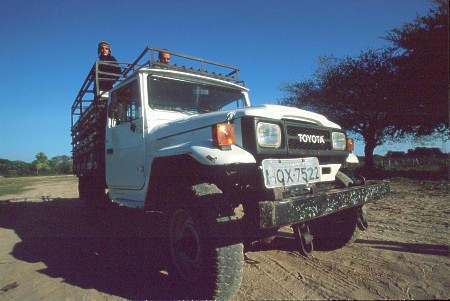
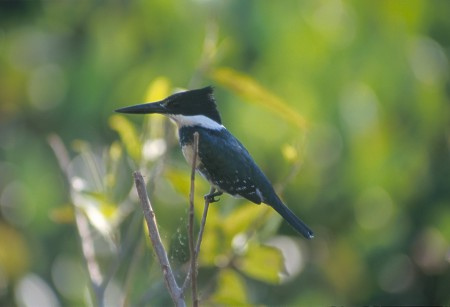
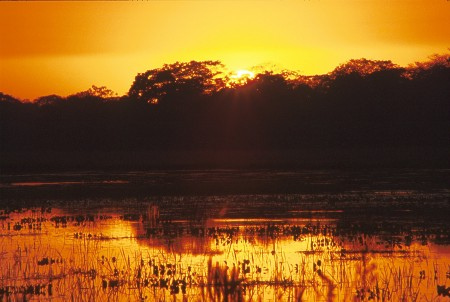


Banner photo: Children dressed in costume, participating in the annual Cavalhada (Lucas Ninno/GCOM)
Footer images: Andrew Mercer
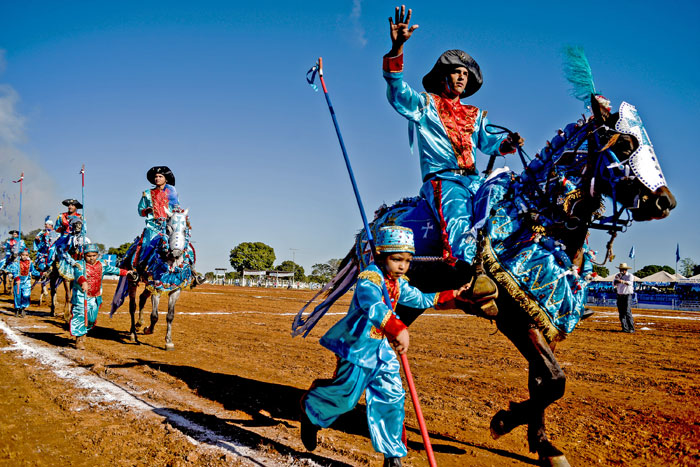
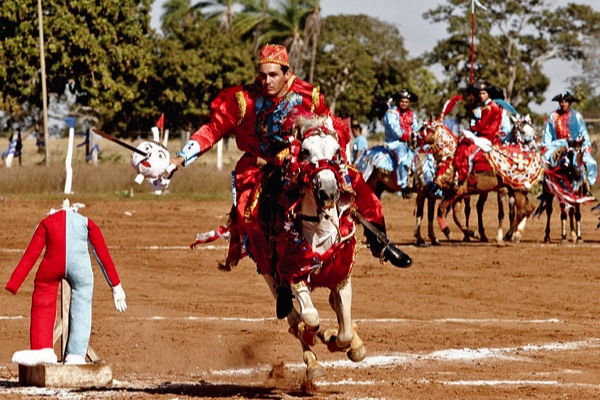


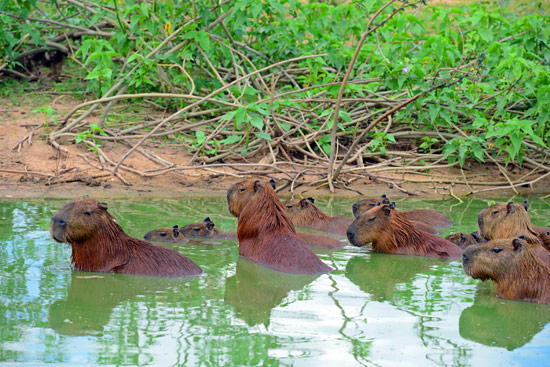
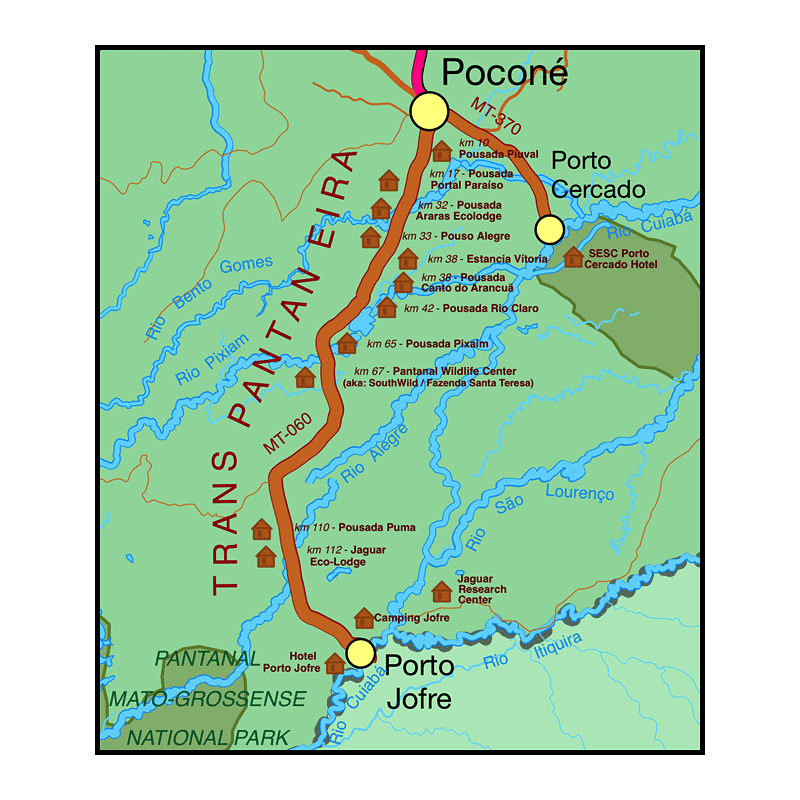
Pantanal Escapes